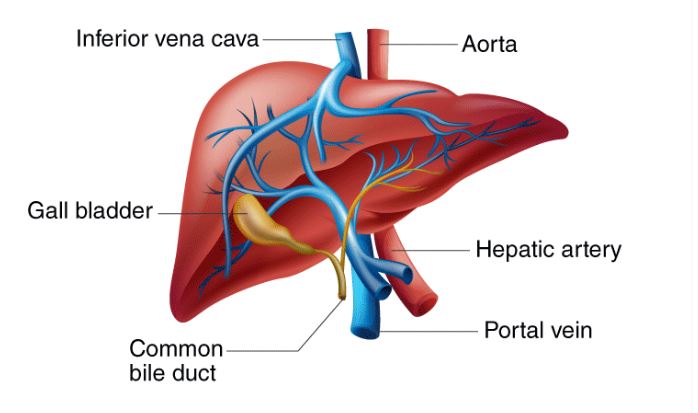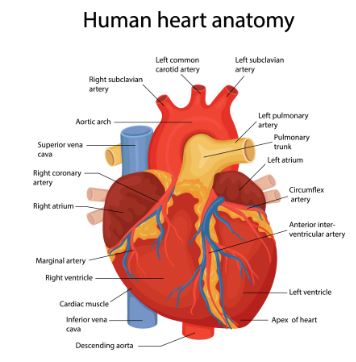Life Process Notes Class 10
Class 10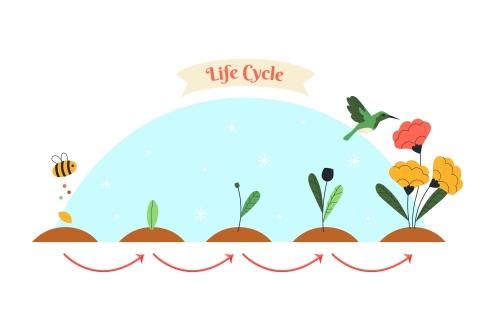
Life process class 10 notes in this article you will understand the fundamental activities that are essential for the survival of living organisms. In class 10, biology students learn about the different life processes that occur in plants and animals. These processes include nutrition, respiration, circulation, excretion, and reproduction. Understanding these life processes is important for students to appreciate the complexity of living organisms and their interdependence on the environment. This article will provide a comprehensive overview of the different life processes and their significance, as covered in the class 10 biology curriculum. By the end of this article, students will have a better understanding of how living organisms maintain themselves and function in their environment.
Here you will find detailed Life process class 10 notes. For quick revision of this chapter checkout Life process Class 10 Quick Revision notes.
Life
Only one planet, Earth, is known to support life, where living beings are born, die, and eventually return to nature. Living organisms can be distinguished from inanimate entities based on various parameters of life processes.
.png)
Life Process
Living organisms require maintenance, even when they are moving, resting, or sleeping. The processes that accomplish the function of maintaining life are known as life processes. Examples of essential life processes include nutrition, respiration, circulation, and excretion. A single cell conducts all of these processes in unicellular organisms. In multicellular organisms, well-developed systems exist to carry out these processes.
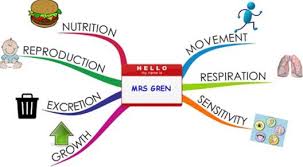
Nutrition - Class 10 Life Process Notes
Two main modes of nutrition exist: autotrophic and heterotrophic. Plants, algae, and some bacteria utilize autotrophic nutrition by producing their food via photosynthesis or chemosynthesis using light or chemical energy, respectively. Bacteria, fungi, and animals employ heterotrophic nutrition by deriving energy from organic compounds, such as animals consuming plants or other animals for food. Heterotrophic nutrition has subtypes, including holozoic, saprophytic, and parasitic nutrition.
Autotrophic Nutrition
Autotrophic nutrition is a mode of nutrition found in plants, algae, and some bacteria, in which organisms produce their food using light energy or chemical energy by photosynthesis or chemosynthesis, respectively. The process of autotrophic nutrition can be explained in the following points:
- Autotrophs are organisms that can synthesize their food using inorganic compounds and an external energy source, such as sunlight or chemicals.
- Photosynthesis is the process used by autotrophs to convert light energy into chemical energy stored in organic molecules.
- The process of photosynthesis involves the absorption of light energy by pigments like chlorophyll, which is present in the chloroplasts of plant cells.
- Chlorophyll converts light energy into chemical energy, which is then used to produce organic molecules such as glucose, which serve as the food source for the organism.
- Chemosynthesis is another process by which autotrophs produce their food. In chemosynthesis, the energy needed for the synthesis of organic molecules comes from the oxidation of inorganic compounds like hydrogen sulfide, ammonia, or iron.
- Autotrophs are at the base of the food chain, as they provide the organic molecules necessary for the survival of all other organisms in the ecosystem.
Photosynthesis
Photosynthesis is the process by which autotrophic organisms, such as plants and algae, produce organic molecules using light energy from the sun. The process of photosynthesis can be explained in the following points:
- Photosynthesis takes place in the chloroplasts, which are organelles found in plant cells.
- Chlorophyll is a green pigment present in the chloroplasts that absorbs light energy from the sun.
- The absorbed light energy is used to split water molecules into oxygen gas and hydrogen ions.
- The hydrogen ions are combined with carbon dioxide to produce organic molecules such as glucose, which serve as the food source for the plant or algae.
- The oxygen gas produced during photosynthesis is released into the atmosphere, where it is utilized by other organisms for respiration.
- The process of photosynthesis also produces ATP, which is used as an energy source by the plant or algae.
- The overall chemical equation for photosynthesis is: 6 CO2 + 6 H2O + light energy → C6H12O6 + 6 O2, which represents the conversion of carbon dioxide, water, and light energy into glucose and oxygen gas.
Stomata
Stomata are small pores or openings found on the surface of plant leaves and stems that regulate the exchange of gases and water vapor with the environment. The functioning of stomata can be explained in the following points:
- Stomata are primarily located on the underside of leaves, where they can reduce water loss due to evaporation by creating a humid microclimate around the stomatal opening.
- The opening and closing of stomata is regulated by two specialized cells called guard cells, which surround the pore.
- Guard cells have a high concentration of potassium ions, which causes them to swell and the stomata to open when water is abundant.
- When water is scarce, guard cells lose potassium ions, causing them to shrink and the stomata to close, preventing water loss through transpiration.
- Stomata also play a role in the exchange of gases, such as oxygen and carbon dioxide, which are needed for photosynthesis and respiration.
- During the day, when there is light available for photosynthesis, stomata open to allow the uptake of carbon dioxide and release of oxygen gas.
- At night, when photosynthesis is not taking place, stomata remain closed to conserve water and prevent water loss through transpiration.
- The density and size of stomata vary depending on the species of plant and environmental conditions, such as temperature and humidity
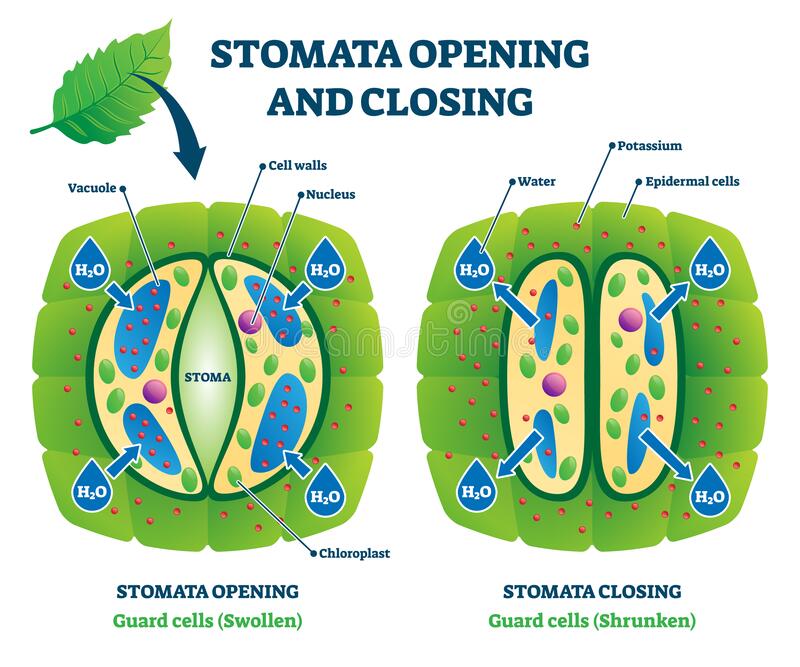
Saprophytic Nutrition
Some organisms feed on dead and decaying organic matter. This mode of nutrition is called saprophytic nutrition.
- The food is partially digested outside the body and then it is absorbed.
- E.g. Fungi
Parasitic Nutrition
Some organisms feed at the expense of another organism and in turn cause harm. This is called the parasitic mode of nutrition.
- These parasites live on the body or in the body of a host organism and derive the nutrients directly from the body of the host.
- E.g. Leech is an ectoparasite while Ascaris is an endoparasite. Cuscuta is a parasitic plant.
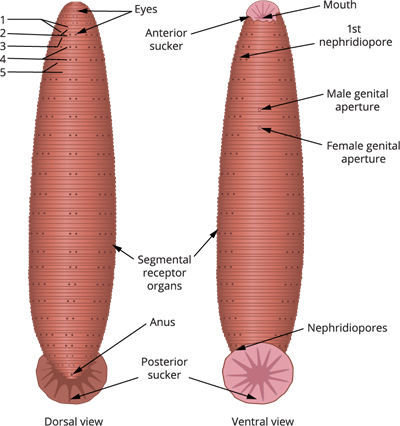
Nutrition in Amoeba
Amoeba uses the holozoic mode of nutrition, which involves the following steps:
- Amoeba engulfs food particles using pseudopodia, a process known as phagocytosis.
- The engulfed food is enclosed in a food vacuole, which is formed by the fusion of pseudopodia.
- The food vacuole containing the food particle passes through the cytoplasm of the Amoeba, where digestion, absorption, and assimilation of nutrients take place.
- During digestion, enzymes secreted by the Amoeba break down the food particle into simpler substances.
- The nutrients from the food particle are absorbed by the cytoplasm of the Amoeba for further use.
- Any undigested or waste material is stored in the food vacuole.
- Eventually, the food vacuole reaches the cell membrane, where undigested material is expelled from the Amoeba through a process called egestion.
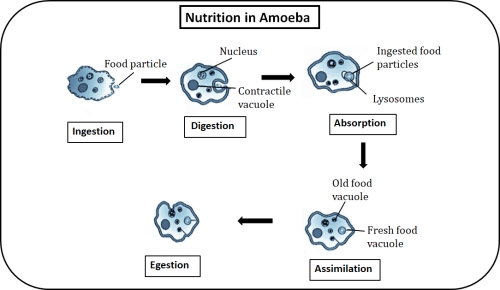
Nutrition in Paramoecium
- Paramoecium exhibits holozoic nutrition and uses its cilia to engulf food through the oral groove.
- It creates a food vacuole that moves through the cytoplasm, a process known as cyclosis.
- The cytoplasm absorbs the digested food from the food vacuole.
- Finally, the undigested food is expelled through a tiny pore called the anal pore or cytopyge.
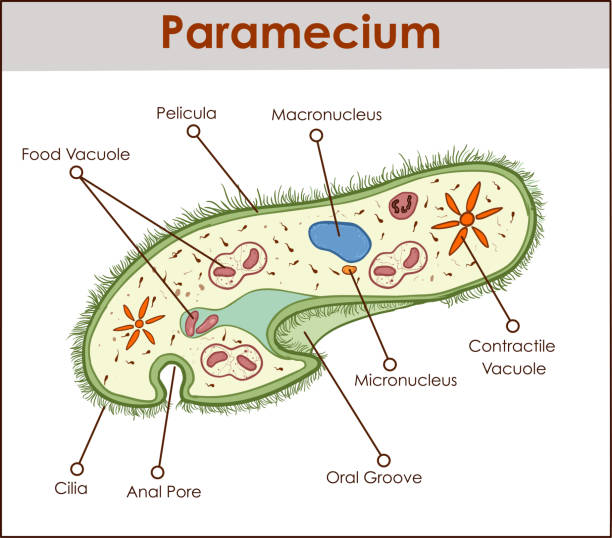
Nutrition in Humans
- Humans can consume both plant-based and animal-based food as they are omnivores.
- The human nutrition system is complex due to their advanced biological makeup.
- The digestive system, consisting of the alimentary canal and digestive glands, work together to provide nourishment.
- Human nutrition comprises five stages: Ingestion, Digestion, Absorption, Assimilation, and Egestion.
- Among the five stages, ingestion, digestion, absorption, and egestion occur in the alimentary canal while assimilation happens throughout the body.
Alimentary Canal
- The alimentary canal in humans is a long tube of varying diameter.
- It starts with the mouth and ends with the anus.
- Oesophagus, stomach, small intestine and large intestine are the parts of the alimentary canal.
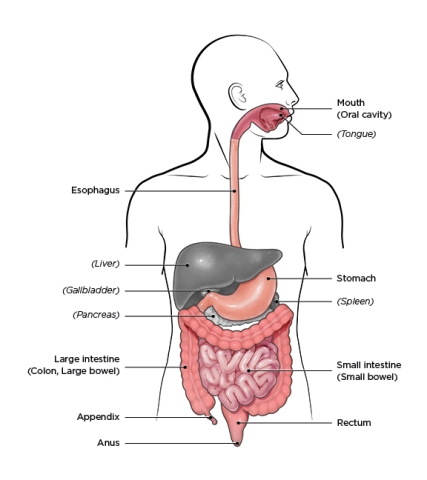
Mouth
- The mouth is the opening of the alimentary canal and facilitates the ingestion of food.
- The buccal cavity, located behind the mouth, is commonly known as the mouth.
- Teeth and a tongue are present in the buccal cavity.
- Teeth aid in masticating food.
- The tongue has taste buds and helps in detecting flavors.
- Salivary glands also open in the buccal cavity and secrete saliva, initiating the digestion process.
Teeth
- Teeth are hard structures located in the buccal cavity and assist in cutting, shearing, and masticating food.
- A vertical section of a tooth exhibits four layers: enamel, dentine, cement, and dental pulp.
- Enamel, the outermost layer, is shiny, highly mineralized, and the hardest substance in the human body.
- Dentine forms the bulk of the tooth and contains 70% inorganic salts.
- Cement lines the tooth and bony socket.
- Dental pulp is the central, soft part of the tooth containing nerve endings, blood, lymph vessels, and connective tissue.
- Humans have four types of teeth - incisors, canines, molars, and premolars - each serving a unique function.
- Incisors cut food, canines tear it, and molars and premolars crush it.
- The dental formula for adult humans is 2:1:2:3.
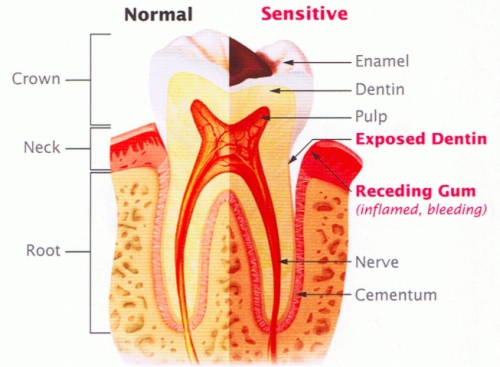
Oesophagus & Stomach
Oesophagus
- The food that is swallowed moves into the oesophagus.
- The oesophagus is a muscular tube that measures approximately 25 cm and has a sphincter at each end.
- Its primary role is to transport food and fluid from the mouth to the stomach after swallowing.
- Peristaltic movements force food downward in the oesophagus.
Stomach
- The stomach is a bag-like structure with thick walls.
- Food from the oesophagus enters at one end, and it opens into the small intestine at the other end.
- The inner lining of the stomach secretes mucous, hydrochloric acid, and digestive juices.
- Chyme is the semi-solid mass formed by the churning of food in the stomach.
- Gastric juice enzymes are responsible for breaking down food.
- Hydrochloric acid partially digests proteins and eliminates harmful bacteria.
- The stomach wall secretes mucus that resists the corrosive effects of hydrochloric acid.
Small Intestine
- The small intestine, about 20 feet long in humans, is the longest part of the alimentary canal.
- It comprises three regions: duodenum, jejunum, and ileum.
- The duodenum follows the stomach, the jejunum is the middle part, and the ileum continues further into the large intestine.
- The internal surface of the small intestine has finger-like projections called villi.
- The duodenum receives secretions from a common pancreatic duct that originates from the pancreas and liver.
- The small intestine is where most of the chemical digestion and absorption occur
Large Intestine
- The large intestine in humans measures about 5 feet in length.
- It consists of two regions, the colon (about 1.5 m long) and the rectum (10 cm long in adults).
- The region of the large intestine following the ileum is called the colon, while the last part is called the rectum.
- The colon is divided into three regions: the ascending colon, the transverse colon, and the descending colon.
- A small finger-like outgrowth, called an appendix, is seen at the base of the ascending colon.
- The appendix houses many useful bacteria required for the digestion of food.
- The rectum opens to the outside through the anus.
- The anus has internal and external anal sphincters.

Peristalsis
A constant wave-like movement of the alimentary canal right from the oesophagus to the small intestine is called as peristalsis.
- Muscles present in the wall of the alimentary canal are responsible for peristalsis.
- This movement helps to push the food through the alimentary canal.
Digestive Glands
- Salivary glands, Gastric glands, Liver, Gallbladder, and Pancreas are among the glands that produce digestive juices to aid in food digestion.
- Salivary glands secrete saliva that initiates digestion in the mouth.
- Gastric glands located in the stomach wall secrete hydrochloric acid and the enzyme pepsin.
- The liver produces bile, which is then stored in the gallbladder. Bile helps in the digestion of fats.
- The pancreas secretes a variety of digestive enzymes, which together form the pancreatic juice.
- Pancreatic juice contains enzymes such as trypsin, chymotrypsin, lipase, and amylase.
Pancreas
- The pancreas, a long and flat gland, is present behind the stomach in humans.
- It serves as one of the major digestive glands and has a mixed nature, being both endocrine and exocrine.
- As an endocrine organ, it secretes two hormones, insulin and glucagon, which maintain blood sugar levels.
- As an exocrine gland, it secretes pancreatic juice, a mixture of many digestive enzymes.
- The pancreas secretes trypsin, chymotrypsin, and proteases that break down proteins.
- It also secretes amylase, which digests the starch content of food.
- Pancreatic lipases are enzymes that aid in the digestion of fats.
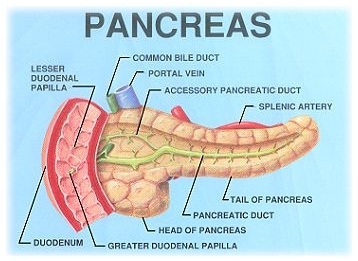
Holozoic Nutrition
The mode of nutrition in which animals take their food as a whole is called as holozoic nutrition. In holozoic nutrition, food passes through five steps as ingestion, digestion, absorption, assimilation and egestion.
Physiology of Digestion
- The buccal cavity carries out mechanical digestion of food by masticating it with the teeth, mixing it with saliva, and turning it into a bolus.
- Salivary amylase present in the saliva initiates the digestion of starch in the buccal cavity by converting it into maltose.
- Muscular contraction and relaxation of the stomach walls churn the food, breaking it down into simpler substances.
- The stomach starts the digestion of proteins with the action of pepsin, which breaks them down into smaller fragments called peptides.
- The bolus mixed with gastric juice transforms into a fine, soluble form known as chyme.
- The small intestine is where complete digestion takes place due to the action of various enzymes present in pancreatic juice, bile, and intestinal juice.
- The villi and microvilli of the small intestine completely absorb the digested food.
- The large intestine receives the undigested food, where the colon is responsible for absorbing water and salts.
- The rectum temporarily stores the undigested food before defecation.
Digestive System in Other Animals
- Different animals exhibit variations in the structure and function of their digestive systems.
- The food habits of an animal determine the structure of its digestive system.
- Herbivores have a long alimentary canal as their plant-based diet has a high cellulose content, which takes a long time to digest.
- In contrast, carnivorous animals have a comparatively shorter alimentary canal because meat gets digested faster.
Anatomy of Digestive Tract
- The gastrointestinal tract, also known as the alimentary canal, spans approximately 30 feet (9m) in humans.
- The alimentary canal starts at the mouth and terminates at the anus, forming a tube of varying diameter in between.
- The parts of the alimentary canal include the oesophagus, stomach, small intestine (comprising the duodenum, jejunum, and ileum), and large intestine (comprising the colon and rectum).
- Major digestive glands such as the salivary glands, pancreas, and liver contribute to digestion.
- In addition to these, glands present in the walls of the stomach and small intestine also play a role in food digestion.
Role of HCl
- Gastric glands present in the stomach wall secrete hydrochloric acid.
- The pH of the gastric acid usually falls between 1.5 to 3.5.
- The acid plays several vital roles, including converting inactive pepsinogen and pro-rennin into active pepsin and rennin, respectively.
- It creates an acidic environment essential for protein digestion and helps kill bacteria present in the food, preventing infection.
- The acid also prevents putrefaction of food in the stomach.
- Mucous glands of the stomach secrete a thick layer of mucus to protect the stomach from the action of gastric acid.
- Excess acid can damage the gastric mucosa, leading to gastric and duodenal ulcers.
Salivary Glands
- Salivary glands are exocrine glands responsible for secreting saliva, which is then poured into the mouth through a system of ducts.
- In humans, there are three major pairs of salivary glands: the parotid, submandibular, and sublingual glands.
- Healthy individuals typically produce between 0.5 to 1.5 litres of saliva per day.
- Saliva has several functions in the oral cavity, including lubricating and protecting the soft and hard tissues.
- Saliva also protects against dental caries and prevents microbial growth in the oral cavity.
- It can also aid in soft tissue repair by decreasing clotting time and increasing wound contraction.
- Saliva contains the enzyme amylase, which hydrolyses starch into maltose and dextrin, allowing digestion to occur before the food reaches the stomach.
- Additionally, saliva acts as a solvent in which solid particles can dissolve and enter the taste buds located on the tongue.
Heterotrophic Nutrition
- A heterotrophic mode of nutrition is when an organism depends on others for food.
- Autotrophs are the source of nutritional requirements for these organisms.
- Herbivores are animals that eat plants as their food and are an example of heterotrophic nutrition.
- Similarly, animals that eat other animals as their food are called carnivores, which is another type of heterotrophic nutrition.
- Holozoic, saprophytic, and parasitic nutrition are also considered types of heterotrophic nutrition.
Glandular Epithelium
- Many small glands in the inner layer of the stomach and intestine participate in digesting food. -The epithelial lining of the stomach and intestine contains these glands.
- Gastric glands found in different regions of the stomach are responsible for secreting mucus, hydrochloric acid and enzymes like pepsinogen.
- Intestinal glands found in the epithelial lining of the small and large intestine secrete intestinal juice, also known as succus entericus.
- Intestinal juice contains hormones, digestive enzymes, alkaline mucus and substances that neutralize hydrochloric acid from the stomach.
- The intestinal juice completes the digestion process initiated by the pancreatic juice.
- Glands in the large intestine play a role in absorbing water and electrolytes.
Villi and Micro Villi
- The small intestine is responsible for complete digestion and absorption of food.
- The pancreas secretes pancreatic juice, the liver secretes bile and the intestinal glands secrete intestinal juice to complete digestion of food material.
- The nutrients that have been digested are absorbed by villi, which are long finger-like projections present in the ileum of the small intestine.
- Villi increase the surface area for absorption and each villus has its cell membrane of the lumen side again folded into microscopic processes, called microvilli.
- Digested nutrients pass into the semipermeable villi through diffusion.
- In addition to absorption, villi also secrete digestive enzymes to help in chemical digestion of food.
Liver
- The liver, the largest and major digestive gland of humans, performs several important functions.
- It is located in the upper right-hand portion of the abdomen and has a dark reddish-brown color due to an extensive blood supply.
- The liver secretes bile that helps in digestion and filters the blood coming from the digestive tract before passing it to the rest of the body.
- It detoxifies various metabolites and antidotes and makes proteins important for blood clotting and other functions.
- The liver also stores and releases glucose as needed and processes haemoglobin, from the dead and worn out RBCs, for the iron content.
- In addition, the liver is responsible for the conversion of harmful ammonia to urea.
Digestive Juices
- Digestive juices include pancreatic juice, bile, and intestinal juice (succus entericus).
- The secretions from the digestive glands are poured into the duodenum through a common duct.
- Complete digestion of chyme takes place in the small intestine due to the action of various enzymes.
- Bile from the liver, which enters the duodenum, turns the acidity of chyme into alkalinity. This is necessary for pancreatic enzyme action.
- Bile also emulsifies fats into smaller globules.
- Carbohydrates are broken down into glucose by pancreatic and intestinal amylases.
- Proteases, including trypsin and chymotrypsin, break down proteins into amino acids.
- Lipase is responsible for breaking down the emulsified fats into glycerol and fatty acids.
Water Absorption in Large Intestine
- The large intestine does not digest food or absorb nutrients; rather, it performs the following functions:
- The major function of the large intestine is to make the stool solid by absorbing water from the remaining indigestible food matter.
- The large intestine aids in the absorption of vitamins synthesized by bacteria that usually reside in the large intestine.
- The innermost layer of the large intestine acts as a barrier, shielding against microbial infections and invasions.
- The undigested food is temporarily stored in the rectum until defecation.
Respiration
Introduction to Respiration
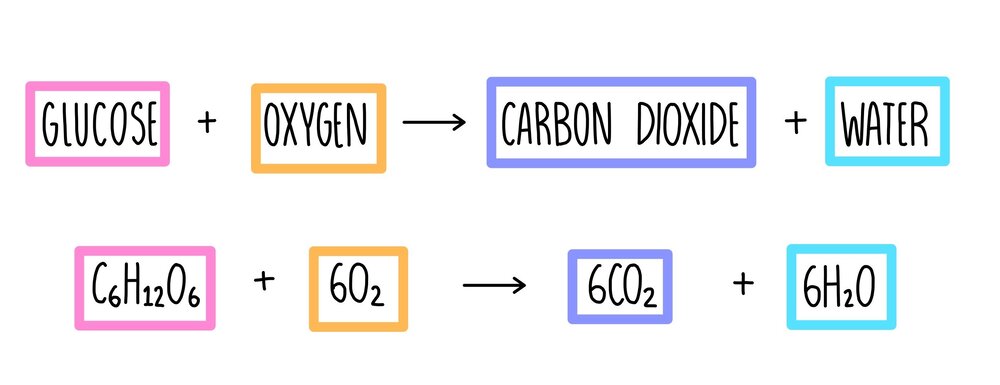
- Exchange of gases broadly defines respiration.
- Different organisms such as animals and plants use distinct mechanisms for the exchange of gases.
- At the cellular level, respiration involves burning food to produce energy for supporting other vital life processes.
- Cellular respiration can occur in the presence or absence of oxygen.
Respiration in Humans
- The human respiratory system includes breathing, exchange of gases, and cellular respiration.
- A well-defined respiratory system facilitates breathing and gas exchange.
- Breathing consists of inhaling oxygen and exhaling carbon dioxide.
- The exchange of gases occurs in the lungs, where oxygen is supplied to all cells of the body.
- Cellular respiration occurs in every cell.
Respiratory System
- The nose, nasal cavities, pharynx, larynx, trachea/windpipe, bronchi, bronchioles, and alveoli make up the human respiratory system.
- A pair of lungs enclose the bronchioles and alveoli.
- Inhalation and exhalation of gases are assisted by the rib cage, muscles associated with the rib cage, and diaphragm.
- Gaseous exchange occurs between an alveolar surface and surrounding blood vessels.
- Alveoli provide a vast surface area for gas exchange.
Physiology of Respiration
- The action of internal intercostal and external intercostal muscles attached to the ribs and the diaphragm facilitates breathing in humans.
- Contraction of the dome-shaped diaphragm and expansion of the rib cage due to the action of intercostal muscles increase the volume of the lungs, decrease pressure, and allow air from outside to rush in. This is inhalation.
- To exhale, the diaphragm relaxes and becomes dome-shaped again, the chest cavity contracts due to the action of intercostal muscles, the volume inside the lungs decreases, pressure increases, and air is forced out of the lungs.
- Inhaled air increases the concentration of oxygen in the alveoli, and oxygen diffuses into the surrounding blood vessels.
- Blood coming from cells has a higher concentration of carbon dioxide than outside air, and thus carbon dioxide diffuses out of the blood vessels into the alveoli.
- Therefore, the combined action of intercostal muscles and diaphragm facilitates breathing, while the exchange of gases occurs due to simple diffusion.
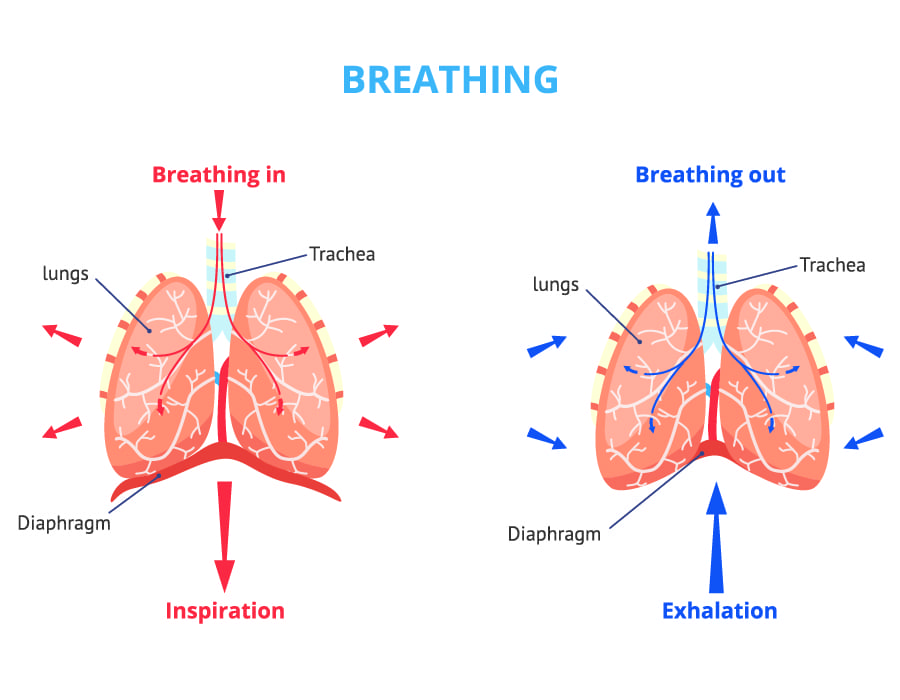
Inhalation and Exhalation
- Inhalation is the process of taking in air rich in oxygen.
- Exhalation is the process of giving out air rich in carbon dioxide.
- One complete breath cycle involves one inhalation and one exhalation.
- Humans breathe multiple times a day.
- The breathing rate of a person is the number of breaths taken in one minute.
Diffusion
Diffusion is the movement of molecules from high concentration area to the low concentration area without spending any energy.
Cellular Respiration -Life Process Notes Class 10
- Cellular respiration is a set of metabolic reactions that occur inside the cells, converting biochemical energy from food into a chemical compound called adenosine triphosphate (ATP).
- Metabolism is a set of chemical reactions that maintain the living state of cells in an organism and can be divided into two categories: a. Catabolism - the process of breaking down molecules to obtain energy. b. Anabolism - the process of synthesizing compounds required by the cells.
- Respiration is a catabolic process that breaks down large molecules into smaller ones, releasing energy to fuel cellular activities.
- Glycolysis, Krebs cycle, and electron transport chain are important processes of cellular respiration.
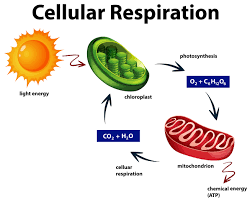
Aerobic Respiration
- Aerobic respiration is a process that converts glucose into energy in the presence of oxygen.
- The process of aerobic respiration can be represented by the equation: Glucose + oxygen ⇒ Carbon dioxide + Water + Energy.
- Animals, plants, and other living organisms undergo this type of respiration.
Respiration in Lower Animals
- Lower animals do not possess a sophisticated respiratory system like lungs and alveoli.
- They rely on simple exchange mechanisms for respiration.
- Earthworms take in gases through their skin.
- Fishes use gills for gaseous exchange.
- Insects have a tracheal system, a network of tubes that allows air to circulate and gaseous exchange to occur.
- Frogs can respire through their skin when in water and through their lungs when on land.
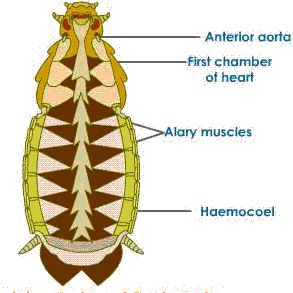
When there is not enough oxygen, muscles can undergo anaerobic respiration. During this process, glucose breaks down into carbon dioxide and lactic acid, resulting in the buildup of lactic acid that causes muscle soreness. This type of anaerobic respiration is also called lactic acid fermentation.
ATP
Adenosine Tri-Phosphate (ATP) is the energy currency of the cell, formed as a result of reactions such as photosynthesis and respiration. ATP contains three high-energy phosphate bonds, and when these bonds break, a large amount of energy is released. This energy is utilized for other metabolic reactions.
Respiration in Plants
- Unlike animals and humans, plants do not have any specialized structures for gaseous exchange
- They have stomata (present in leaves) and lenticels (present in stems) which are involved in the exchange of gases.
- Compared to animals, plant roots, stems, and leaves respire at a very lower rate.
.jpg)
Transpiration
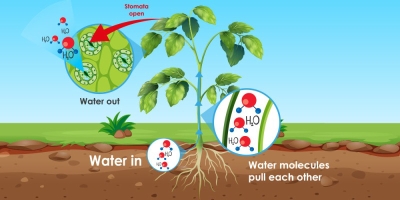
- Plants lose water in the form of water vapor through a biological process called transpiration.
- The primary site for transpiration is the stomata, where gas exchange of oxygen and carbon dioxide also occurs.
- Transpiration aids in the transportation of water from the roots to the upper parts of the plants, as explained by the "transpirational pull theory."
- This theory suggests that water loss from leaves creates a straw-like effect, which pulls water upward from the roots.
- Additionally, transpiration serves as an excretory mechanism in plants by eliminating excess water.
Why Do We Need Lungs?
.jpg)
- In unicellular organisms like amoebas, gases are exchanged through the general body surface by osmosis.
- In lower animals such as earthworms, gaseous exchange occurs through their moist skin.
- However, as animals become more complex, such as humans, the diffusion of oxygen alone is insufficient to meet their needs.
- Additionally, diffusion cannot supply oxygen to the deeper cells of the body.
- Therefore, a more complex mechanism of gaseous exchange has evolved, which involves the development of lungs.
- The alveoli present in the lungs provide a large surface area necessary for the required gas exchange.
Transportation in Human Beings - Life Process Notes Class 10
Transportation
- All living organisms require certain essential components such as air, water, and food to survive.
- Animals obtain these elements by breathing, drinking, and eating regularly.
- A transportation system carries these essential elements to their body cells and tissues.
- In plants, the vascular tissue is responsible for transporting these substances.
Transportation in Humans
- The circulatory system is responsible for transportation in humans.
- This system mainly comprises the heart, blood, and blood vessels.
- The circulatory system supplies oxygen and nutrients to the body and removes carbon dioxide and other excretory products.
- Additionally, it assists in fighting infections
Heart
- The heart is a muscular organ located slightly towards the left in the thoracic region of the body.
- It serves as the primary pumping organ of the body.
- The human heart consists of four chambers, which are responsible for transporting oxygenated and deoxygenated blood.
- The upper two chambers of the heart are known as atria, while the lower two chambers are called ventricles.
Circulation of blood through heart
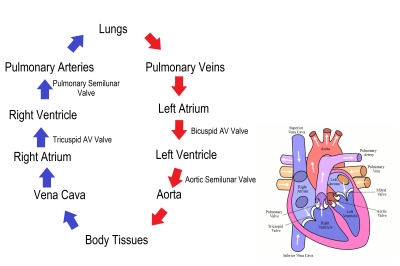
Blood Vessels
- Blood vessels carry blood throughout the body.
- There three types of blood vessels; arteries, veins and blood capillaries.
- Arteries carry oxygenated blood and veins carry deoxygenated blood.
- Gaseous exchange takes place between blood and cells at capillaries.
Difference between Arteries and veins
| Arteries | Veins |
|---|---|
| Carry oxygenated blood away from the heart. | Carry deoxygenated blood towards the heart. |
| Have thick, muscular walls to withstand high blood pressure. | Have thin walls as blood flows at a lower pressure. |
| Have no valves. | Have valves that prevent the backward flow of blood. |
| Branch into smaller vessels called arterioles. | Merge into larger vessels called venules. |
| Blood flows rapidly and in spurts. | Blood flows slowly and steadily. |
| Found deeper in the body, near bones or in the muscular tissue. | Found closer to the skin's surface. |
| Divide into smaller vessels that are progressively thinner. | Merge into larger vessels that are progressively thicker. |
| Transport blood rich in nutrients and oxygen to the body's tissues. | Transport blood rich in metabolic wastes and carbon dioxide from the body's tissues. |
Blood Pressure
- Blood pressure refers to the pressure exerted by the blood as it flows through the blood vessels.
- There are two variants of blood pressure, namely systolic and diastolic blood pressure.
- Diastolic pressure refers to the pressure exerted on the walls of arteries when the heart is filling with blood. It represents the minimum pressure on arteries.
- The normal range of diastolic blood pressure should fall between 60 – 80 mm Hg.
- Systolic pressure refers to the pressure exerted on the walls of arteries when the heart is pumping blood. It represents the maximum pressure applied to the arteries.
- The normal range of systolic blood pressure should be 90 – 120 mm Hg.
Bleeding- Life Process Notes Class 10
When blood vessels rupture, bleeding occurs. Platelets aid in stopping bleeding by clotting blood at the site of injury. The process of forming a clot to prevent excessive loss of blood from the body is called blood clotting. This process involves the formation of a gel-like mass comprising platelets and a fiber-like protein in the blood.
Double Circulation
The human body experiences blood circulation twice through the heart, once during pulmonary circulation and the second time during systemic circulation. Therefore, double circulation is the term used to describe circulation in human beings.
Transportation in Plants
Transportation in Plants
- Plants depend on transportation as a vital process.
- This process involves carrying water and essential nutrients to all parts of the plant for its survival.
- Plants transport food and water separately.
- Xylem is responsible for transporting water while phloem carries food.
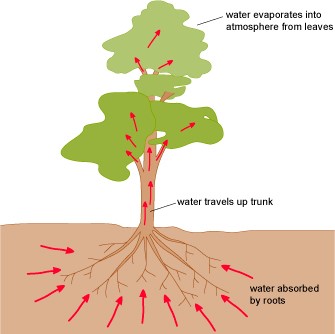
Phloem
- The phloem is responsible for translocation of nutrients and sugar like carbohydrates, produced by the leaves to areas of the plant that are metabolically active.
- Sieve tubes, companion cells, phloem fibres, and phloem parenchyma cells are the components of this tissue
- The flow of material through phloem is bidirectional.
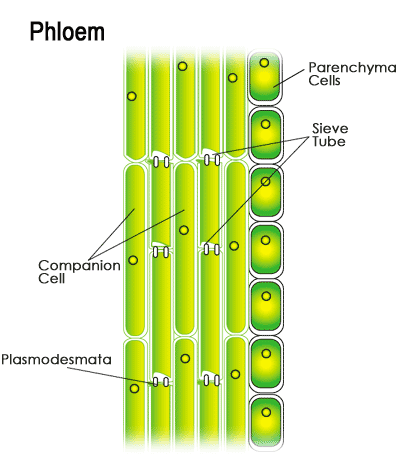
Translocation - Life Process Notes Class 10
- Translocation is the process of transporting food in plants through the phloem.
- The phloem carries photosynthates, which include sugars, amino acids, organic acids, proteins, and inorganic solutes such as potassium, magnesium, nitrate, calcium, sulfur, and iron from mature leaves (source tissues) to areas of growth and storage (sink cells).
- ATP energy is used to load materials like sucrose from leaves into the phloem.
- This loading process increases the osmotic pressure, which causes water from nearby cells to move into the phloem tissue, facilitating the transportation of materials through the phloem.
- The same pressure is responsible for transferring substances from the phloem to the tissues that require food.
- Therefore, the bulk flow of material through the phloem occurs in response to an osmotically generated pressure difference.
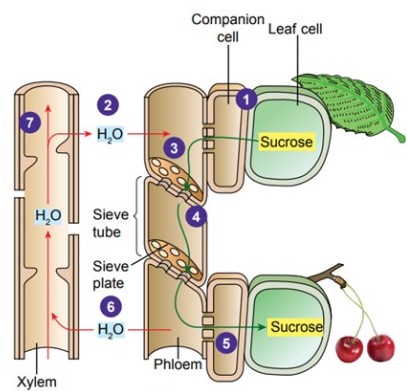
Xylem
- Xylem tissue actively transports water in plants from the roots to all other parts of the plant.
- Tracheids, vessels, xylem fibers, and xylem parenchyma make up the xylem tissue.
- The flow of water and minerals through the xylem is always unidirectional.
Difference between Xylem and Phloem
| Features | Phloem | Xylem |
|---|---|---|
| Function | Transports food (sugars, amino acids, etc.) from leaves to other parts of the plant | Transports water and dissolved minerals from roots to other parts of the plant |
| Components | Sieve tube elements, companion cells, phloem fibers, phloem parenchyma | Tracheids, vessels, xylem fibers, xylem parenchyma |
| Flow direction | Bidirectional, depending on plant's needs | Unidirectional, from roots to other parts of the plant |
| Energy source for transport | Energy from ATP is used to load materials into phloem | Passive transport driven by transpiration |
| Pressure gradient | Osmotically generated pressure gradient moves materials from source to sink | Transpiration-driven negative pressure gradient moves materials from roots to leaves |
| Special structures | Sieve plates connect sieve tube elements | Perforation plates connect vessels |
| Movement of materials | Materials move from high concentration to low concentration | Materials move from high potential to low potential |
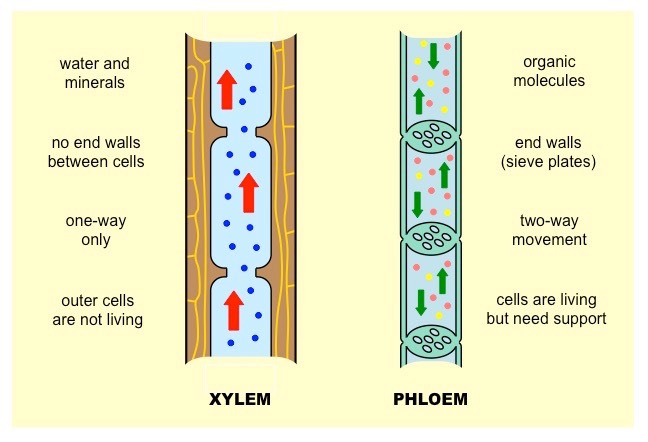
- The conduction of water through the xylem, from roots to upper parts of plants, occurs due to various forces acting together.
- Root pressure is one of the forces responsible for this movement of water.
- Root pressure is the osmotic pressure within the cells of a root system that causes sap to rise through a plant stem to the leaves.
- Root pressure plays a crucial role in the initial transport of water up the roots.
Transport of Water
- The roots absorb water and transport it to the upper parts of the plant through the xylem.
- Imbibition, osmosis, root pressure, and transpiration are the forces that contribute to the upward movement of water, even in the tallest plants.
- Imbibition is a process where solids absorb water, such as when seeds take up water during soaking.
- Osmosis is the movement of water from an area of lower concentration to an area of higher concentration.
- At the roots, cells actively take up ions, creating a concentration difference that results in the movement of water through osmosis.
- This creates a continuous column of water that gets pushed upwards, known as root pressure.
- Transpiration contributes to the upward movement of water by creating a "straw effect" that pulls the water column upwards due to the continuous loss of water from leaves.
- All of these forces work together to transport water through the xylem.
Excretion in Humans
Excretion in humans is a vital life process that helps the body get rid of harmful waste products. The process of excretion is essential for maintaining the proper functioning of various organs and systems in the body.
In class 10 life process notes, students learn that the excretory system in humans comprises several organs, including the kidneys, liver, lungs, and skin. These organs work together to eliminate waste products such as urea, carbon dioxide, and excess water from the body.
Excretion
- Excretion is the process of removing metabolic waste material and other non-useful substances.
- Animals have an advanced and specialized excretory system, but plants do not.
- Plants lack a well-developed excretory system like that in animals and do not have special organs for excretion.
- As a result, excretion in plants is not as complex as in animals.
In conclusion, the process of excretion is an essential life process that ensures the proper functioning of various organs and systems in the human body. As students learn in their class 10 life process notes, maintaining proper excretion through the functioning of the excretory system is crucial for good health and well-being.
Excretion in Unicellular Organisms
- In unicellular organisms such as amoeba and bacteria, waste products are removed by simple diffusion through the general body surface.
- Unicellular organisms like amoeba and paramecium excrete excess waste through tiny organelles called contractile vacuoles.
- Undigested food in unicellular animals is excreted when the food vacuole merges with the general body surface and opens to the outside.
Excretory System of Humans
- The excretory system in humans includes
- a pair of kidneys,
- a pair of ureters,
- a urinary bladder and
- urethra.
- It produces urine as a waste product.
Kidneys
- The main excretory organs of the body are the paired kidneys.
- Kidneys act as the filtration units of the human body and are made up of many tiny filtration units called nephrons.
- Kidneys perform crucial functions such as filtering waste materials, medications, and toxic substances from the blood.
- They also regulate the osmolarity, ion concentration, and pH of the body.
- In addition, they regulate the extracellular fluid volume and secrete hormones that help produce red blood cells, promote bone health, and regulate blood pressure.
Nephron
- The kidney is composed of millions of nephrons, which are the basic structural and functional unit of the kidney.
- Each nephron consists of two parts: the Malpighian body and renal tubule.
- The Malpighian body is composed of Bowman's capsule, a cup-like structure that surrounds a bundle of capillaries called glomerulus, which filters waste materials and useful substances.
- The renal tubule has three regions: proximal convoluted tubule, Loop of Henle, and distal convoluted tubule.
- These regions absorb useful substances back into the bloodstream and filter out the remaining waste substances.
- The waste substances and excess water are eliminated from the body as urine, which is the output from nephrons.
Haemodialysis - Life Process Notes Class 10
- A technology called dialysis has been developed to compensate the situation when the kidneys fail, as it results in many complications.
- The dialysis machine uses a filter called a dialyzer or artificial kidney to remove excess water, salt, and waste products of metabolism and balance other electrolytes in the body.
- The blood is removed from the body and passed through a series of tubes made up of a semipermeable membrane.
- On the other side of the membrane, a dialysate flows which draws impurities through the membrane.
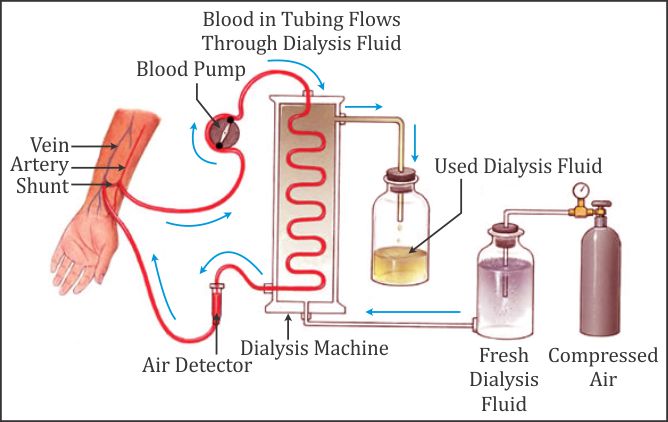
Excretion in Plants
- Plants produce excretory products during metabolic reactions such as cellular respiration and photosynthesis.
- Major excretory products in plants include carbon dioxide, excess water, and nitrogenous compounds.
- Plants release two gaseous waste products, oxygen during photosynthesis and carbon dioxide during respiration.
- Stomatal pores on leaves serve as a pathway for gaseous waste excretion in plants.
- Excess water is excreted by transpiration.
- Organic waste products like gums, oils, latex, and resins are stored in different parts of the plant.
- These waste products are shed off eventually.
- Some examples of excretory products of plants are orange oil, eucalyptus oil, jasmine oil, latex from rubber tree and papaya tree, gums from acacia.
- Plants sometimes excrete into the soil.
Conclusion
After reviewing the life process notes Class 10, it is clear that this topic is essential for understanding the functioning of living organisms. The notes provide a comprehensive overview of the various life processes that occur within living beings, such as nutrition, respiration, transportation, excretion, and reproduction.
Life process class 10 notes emphasize the importance of nutrition and the different types of nutrients that organisms require to survive, including carbohydrates, proteins, fats, vitamins, and minerals. Additionally,Life process class 10 notes explain the process of respiration, which involves the exchange of gases between the organism and the environment. This process is crucial for the survival of living beings, as it enables them to produce energy from food.
Life process class 10 notes also cover transportation, which is the movement of substances such as water, nutrients, and gases throughout the organism's body. This process is facilitated by different structures such as blood vessels and the circulatory system.
Furthermore, Life process class 10 notes explain the process of excretion, which involves the removal of waste products from the organism's body. This process is essential to maintain the balance of the internal environment and prevent the buildup of toxic substances.
Finally, Life process class 10 notes discuss reproduction, which is the process by which living beings produce offspring. This process ensures the continuation of the species and the perpetuation of life.
In conclusion, the life process notes for Class 10 provide a comprehensive overview of the various life processes that occur within living beings. Life process class 10 notes emphasize the importance of understanding these processes to comprehend the functioning of living organisms. Overall, the notes serve as an excellent resource for students to learn about the fundamental concepts of life processes.
To get Class 10 Complete video lectures taught by IITian and Doctor faculties, Complete study material, test series and much more, Download the eSaral App.

